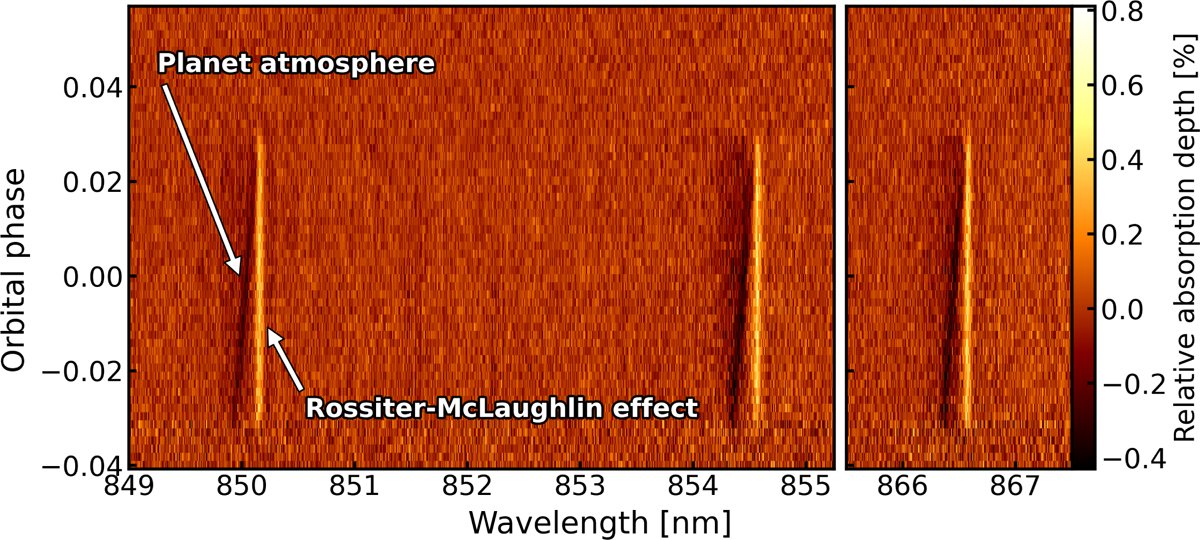Fig. 1

Download original image
Spectral time series at the wavelength of interest for the Ca+ triplet around 850-867 nm. The time series of the two observation nights were stacked after correcting for telluric contamination, and normalisation of the spectra to a common flux level, as well as outlier rejection with subsequent integration over the outlier pixels. The spectral time series is shown in the rest frame of the star. The vertical bright emission feature originates from the planet crossing the stellar disc over the course of the transit (Rossiter–McLaughlin effect or Doppler shadow). The dark absorption feature is caused by the atmosphere of the planet. In addition, there is a fainter, wider dark absorption feature, barely noticeable by eye, which is also part of the residual of the planet crossing the stellar disc (see Fig. 5). This spectral time series is a rare case in which you can see the planetary absorption without stacking in the planetary rest frame thanks to the high signal-to-noise ratio achieved during these MAROON-X observations.
Current usage metrics show cumulative count of Article Views (full-text article views including HTML views, PDF and ePub downloads, according to the available data) and Abstracts Views on Vision4Press platform.
Data correspond to usage on the plateform after 2015. The current usage metrics is available 48-96 hours after online publication and is updated daily on week days.
Initial download of the metrics may take a while.


